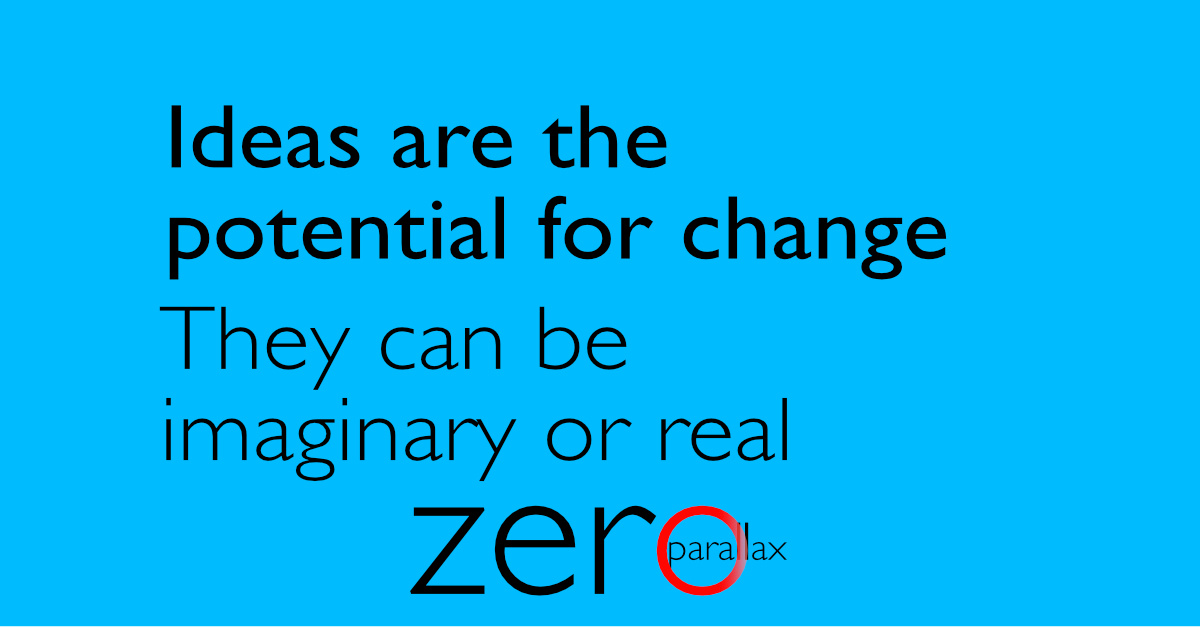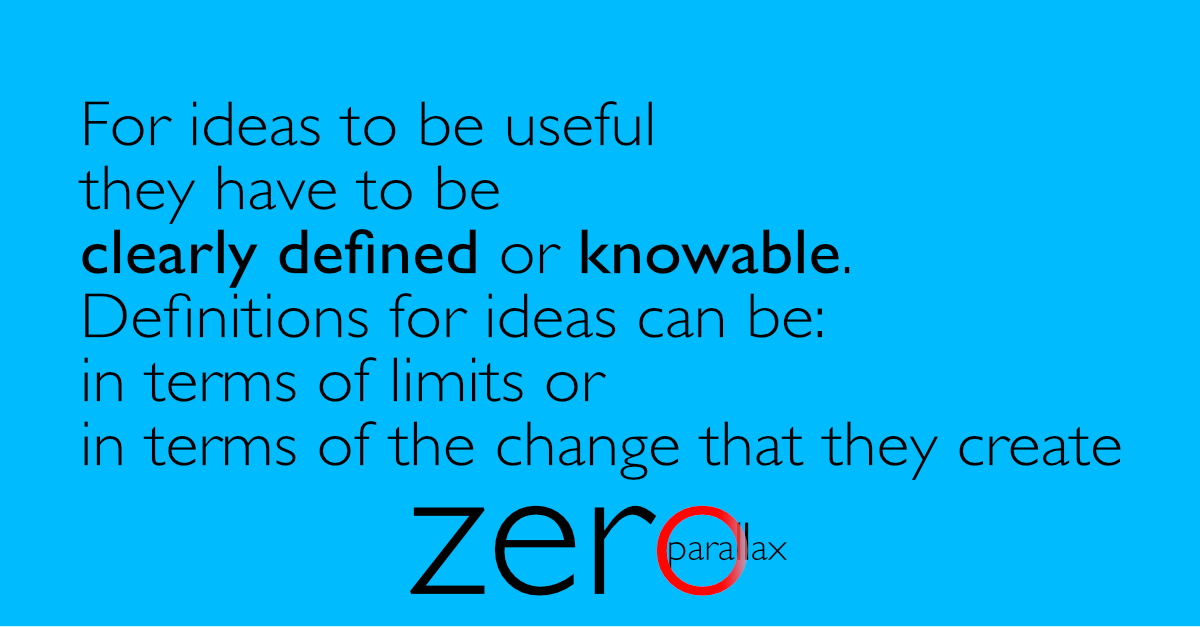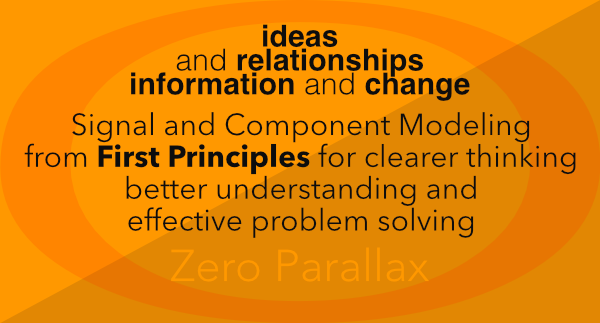Ideas as Units of Meaning

A First Principles approach, or working from first principles, should be applicable to any situation or problem, to make learning, understanding and problem solving easier.
To make this possible we need some basic elements that can be adapted to any situation.
The first of these elements, and tentatively the most basic is: the Idea.
Defining a system
In systems engineering, we can define a system arbitrarily. Draw a border and what is inside that border is the system, and whatever is outside of that is the system environment. The border then not only separates the two but, it also marks where connections between the two can occur.
Let's say we remove the environment. All we then have is the system.
What is the system?
- It is something that interacts with its environment in some special or defined way.
- It is something that can read change from its environment.
(You could think of this as an input!) - But in turn it produces or creates some kind of change.
(You can think of this as an output.)
Defining a system in terms of change
In terms of change, another way that we can look at a sytem is that it is something that can create change within itself.
- That change can be limited to the inside of the system and thus only affect the system itself.
- It can also radiate change outwards past the system boundary and thus affect things outside of itself.
Thus how you draw the boundary of a system, how you define it, can affect the type of change that the system creates.
The important point here is that we can choose how to define a system by choosing where we draw the boundary of that system.
(We can change how we define the system boundary also.)
Choosing how to define a system, we can draw a boundary so that we limit what goes on inside the system. We can also draw the boundary in such a way that we determine or control how it interacts with its environment.
Simplifying A System to an Idea
Let's say that we reduce the system to a single element. It then only produces change when it is connected to something external to itself.
We can call this simplified system an idea. It is clearly defined by its boundary. But it can also be defined by the change it creates when connected to another idea.
An idea can be a simple component. But it can also be a system. What matters is how it affects the "ideas" it connects to. What is the change that it creates?
Since like a system, the change an idea creates can be affected by the way its boundary is drawn, we can look at what an idea does in two ways. We can look at how the idea is defined, meaning it's boundaries or limits. We can also look at the change that the idea creates when connected to other ideas.
In either case, an idea's ability to create change is only a potential until that idea is connected to another idea or ideas.
This is like a charged battery which is only potential until it is plugged into a working device.
Ideas are the Potential for Change
Only when an idea connects to another idea or ideas is it's potential to create change realizable.
Lego® blocks are a good example of this. By themselves, unconnected, they are the potential for change. They are recognizable as ideas because they are clearly defined. Actually putting blocks together to create something else, realizes the potential for change.
In this case it is easier to define the idea via its shape or boundary.
A battery is another general example of an idea. By itself, unconnected, the battery, assuming it is charged, is only electric potential. Generally batteries are categorized by their chemical make up, their size, and the amount of electrical potential they contain. The potential is what really matters though. And until the battery is plugged into a circuit this potential will be unrealized. Once it is plugged in, and the circuit is turned on, then electricity flows and the batteries potential is realized.
And so a way that we can think of a particular idea, the way that we can define it is in terms of the change that it creates when connected to other ideas. Unconnected, we can think of the idea in terms of it's potential to create change.
One Point of View
While I was in the army I learned how to fix guns. Part of learning to fix them included learning all the parts, the ideas that make them up. By themselves, taken apart, these parts were only the potential to create change. Only when the gun was assembled was the potential of these parts realizable. However, to learn how the gun worked we needed to understand the parts, and so we took them apart.
The parts were "ideas".
In engineering school I studied electronics. Looking at a particular circuit or electronic device, part of the process involved looking at the individual parts of the circuit and what those parts, those "ideas" did. By understanding the parts we got a better understanding of how the device worked.
- This exploded point of view could be called the architectural view.
- It could also be called or thought of as the exploded view.
- Or it could be thought of as the component view or "idea view".
It's the view where we look at the individual definition of the component ideas and the changes that these ideas can potentially create.
One Part of Learning to Understand
Looking at ideas and either their definition or the change that they (can potentially) create is one part of the process of learning to understand. If we were to look at a system (which is an idea), one possible point of view is to look at the ideas that make up the system.
- How are these ideas defined (lego blocks)?
- What is the change these ideas create (batteries)?
Of course this is only one view. For complete understanding we need a complementary point of view.
Ourselves as Ideas
We could think of ourselves as ideas. We can be many different ideas, but at any moment in time we can ask ourselves, what is the change that I am trying to create? What is the idea of me at this particular moment in time? How do I define myself?
Models
Scientists use models to help them understand the things that they are studying. The better the model the better they can predict what will happen under certain circumstances.
One of the main reason for "ideas" as basic units of meaning is so that we can use them to create models, or at least one portion of a model.

Giving ideas properties
One final aspect of ideas that can make them more useful in a metaphysical context is to embue them with properties so that they have agency.
